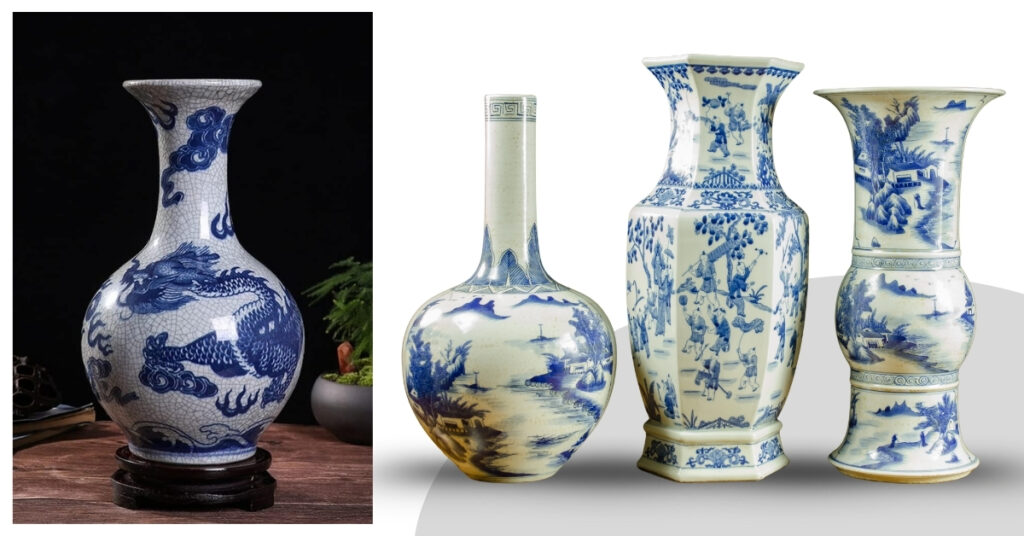Porcelain: Fascinating Facts, Uses, and History
- Posted on 30th October 2025
- in Antique Porcelain
- by Alan
Porcelain has captivated people for centuries, blending art and utility in a way few other materials can match. From delicate tea sets to robust tiles and dazzling decorative pieces, the world of porcelain is vast, intricate, and steeped in history. In this comprehensive overview, we explore porcelain’s origins, its unique physical properties, the process of its creation, cultural significance, and the many ways it shapes our lives today.

What is Porcelain?
Porcelain is a ceramic material made by heating materials, generally including kaolin, in a kiln to temperatures between 1,200°C (2,192°F) and 1,400°C (2,552°F). This process results in a hard, white, translucent ceramic that is both beautiful and durable. Porcelain is distinguished from other ceramics by its fine grain, strength, and ability to be shaped into extremely thin and delicate forms without losing its integrity.
The Origins of Porcelain
The story of porcelain begins in China during the Tang Dynasty (618–907 AD), though some evidence points to even earlier origins. The secret of porcelain making was closely guarded for centuries, giving Chinese artisans a monopoly on the production of this prized material. Porcelain was so valuable that it was traded along the Silk Road and became known as “white gold” throughout Europe.
It wasn’t until the early 18th century that European potters, particularly in Meissen, Germany, unlocked the secret of true hard-paste porcelain. This breakthrough sparked a wave of creativity and competition across Europe, leading to the establishment of legendary porcelain manufactories in places like Sèvres (France), Wedgwood (England), and Capodimonte (Italy).
How is Porcelain Made?
Porcelain manufacturing is a precise art that involves several stages:
- Raw Material Preparation: Kaolin, feldspar, and quartz are the primary ingredients, and they must be carefully measured and mixed.
- Shaping: The porcelain mixture can be shaped by hand, wheel, mold, or slip casting, allowing for a wide range of forms and designs.
- Drying: The shaped items are dried slowly to prevent cracking.
- Bisque Firing: The first firing hardens the porcelain, removing all water and organic material.
- Glazing: A coat of glaze is applied to give the porcelain its shiny, glass-like surface.
- Glaze Firing: A second, higher-temperature firing vitrifies the body and glaze, creating the final product.
The resulting porcelain is noted for its strength, translucency, and smoothness. High-quality porcelain can be so thin that it’s almost transparent, yet it remains strong and resilient.
Porcelain’s Unique Properties
Porcelain is prized for several reasons:
- Translucency: When held up to the light, fine porcelain glows with a soft radiance.
- Hardness: It’s much harder than other types of pottery or ceramics.
- Resistance to Chemicals and Thermal Shock: Porcelain doesn’t easily stain or react with food and drinks, making it ideal for tableware.
- Non-Porous Surface: Its dense structure prevents absorption of liquids and odors.
These properties make porcelain not only beautiful but also practical.
Porcelain Through the Ages: Uses and Cultural Impact
Porcelain’s uses are as varied as its forms. In ancient China, it was used for imperial tableware, ritual vessels, and exquisite works of art. With the spread of porcelain-making techniques, it became a status symbol in Europe, adorning the tables and halls of royalty and aristocracy.
Today, porcelain is everywhere:
- Tableware: Plates, cups, teapots, and serving dishes.
- Tiles and Sanitaryware: Flooring, walls, sinks, and toilets made from porcelain are valued for their durability and clean appearance.
- Decorative Art: Vases, figurines, and sculptures are cherished by collectors.
- Technical Applications: Because of its insulating and mechanical properties, porcelain is used in electrical insulators, lab equipment, and even dental prosthetics.
Famous Porcelain Styles and Patterns
Porcelain’s global journey has given rise to countless styles and traditions:
- Blue and White Porcelain: Originating in China, this iconic style features cobalt blue designs on a white background and remains popular worldwide.
- Meissen Porcelain: The first European hard-paste porcelain, known for its intricate figurines and floral patterns.
- Sèvres and Limoges: Synonymous with French luxury and refinement, these manufactories produce some of the world’s most sought-after porcelain.
Caring for Porcelain
Despite its strength, porcelain can chip or break if mishandled. Here are some tips for care:
- Avoid sudden temperature changes that can cause thermal shock.
- Wash by hand using mild detergents—dishwashers may be too harsh for delicate pieces.
- Store with padding to prevent chips.
Porcelain in Modern Design
Porcelain continues to inspire designers and artists. Modern porcelain can be found in minimalist tableware, avant-garde sculptures, and architectural tiles. Technological advances have also expanded its use into fields such as electronics and medicine, proving that this ancient material remains at the forefront of innovation.
Fun Facts About Porcelain
- The word “porcelain” comes from the Italian “porcellana,” meaning cowrie shell, due to its resemblance to the smooth, shiny surface of these shells.
- Some ancient Chinese porcelain was so highly valued that it was worth more than gold in Europe.
- The finest porcelain is sometimes called “eggshell” because it is so thin and light.
- Collectors worldwide seek out “imperial” porcelain pieces, which were made exclusively for the Chinese royal family.
Conclusion
Porcelain’s enduring appeal lies in its blend of artistry, engineering, and cultural history. Whether gracing a museum, a dinner table, or a modern laboratory, porcelain remains a symbol of human creativity and ingenuity. Its story is still being written, as contemporary artists and scientists continue to push the boundaries of what this remarkable material can do.

